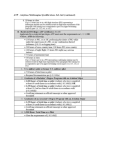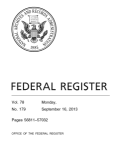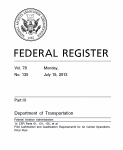Back in 2014, I wrote about six different universities and a community college that were all petitioning the FAA to become exempt from the requirement to hold a ground school certification so that they could participate in the R-ATP program.
That post had become somewhat stale, so here is a look back at what happened in the past few years.
Petitions Denied
Chandler-Gilbert Community College was denied its exemption in November 2017 and as of May 2018 was not authorized to certify R-ATP applicants.
Metropolitan State University of Denver was denied its exemption in July 2014 and as of May 2018 was not authorized to certify R-ATP applicants.
Denied and Then Authorized
Baylor University was denied its exemption in December 2014 and later gained R-ATP authorization in February 2016.
Eastern Michigan University was denied its exemption in August 2015 and later gained R-ATP authorization in July 2016.
Jacksonville University formally withdrew its petition for exemption in September 2016 and gained R-ATP authorization later that same month.
Petitions Granted
Auburn University was granted its exemption in November 2015, allowing Part 61 students who graduated between August 2010 and December 2016 to apply for R-ATP.
Purdue University was granted its exemption in July 2014, allowing Part 61 students who graduated between January 2009 and December 2016 to apply for R-ATP.
 I previously wrote about a
I previously wrote about a  My searches on federal websites found four petitions by universities seeking R-ATP authorization without a required part 141 ground school certificate.
My searches on federal websites found four petitions by universities seeking R-ATP authorization without a required part 141 ground school certificate. Yes, it’s true! After a CFI or CFII checkride, you do not need another flight review for 24 calendar months.
Yes, it’s true! After a CFI or CFII checkride, you do not need another flight review for 24 calendar months. The new first officer qualifications are a hot topic. On July 10, the FAA released its Final Rule, which should appear in the Federal Register next week. Everyone has something to say about this. But opinions aside, all I can I find on the web is the text of the new rule and several paraphrased copies of the FAA press release.
The new first officer qualifications are a hot topic. On July 10, the FAA released its Final Rule, which should appear in the Federal Register next week. Everyone has something to say about this. But opinions aside, all I can I find on the web is the text of the new rule and several paraphrased copies of the FAA press release.